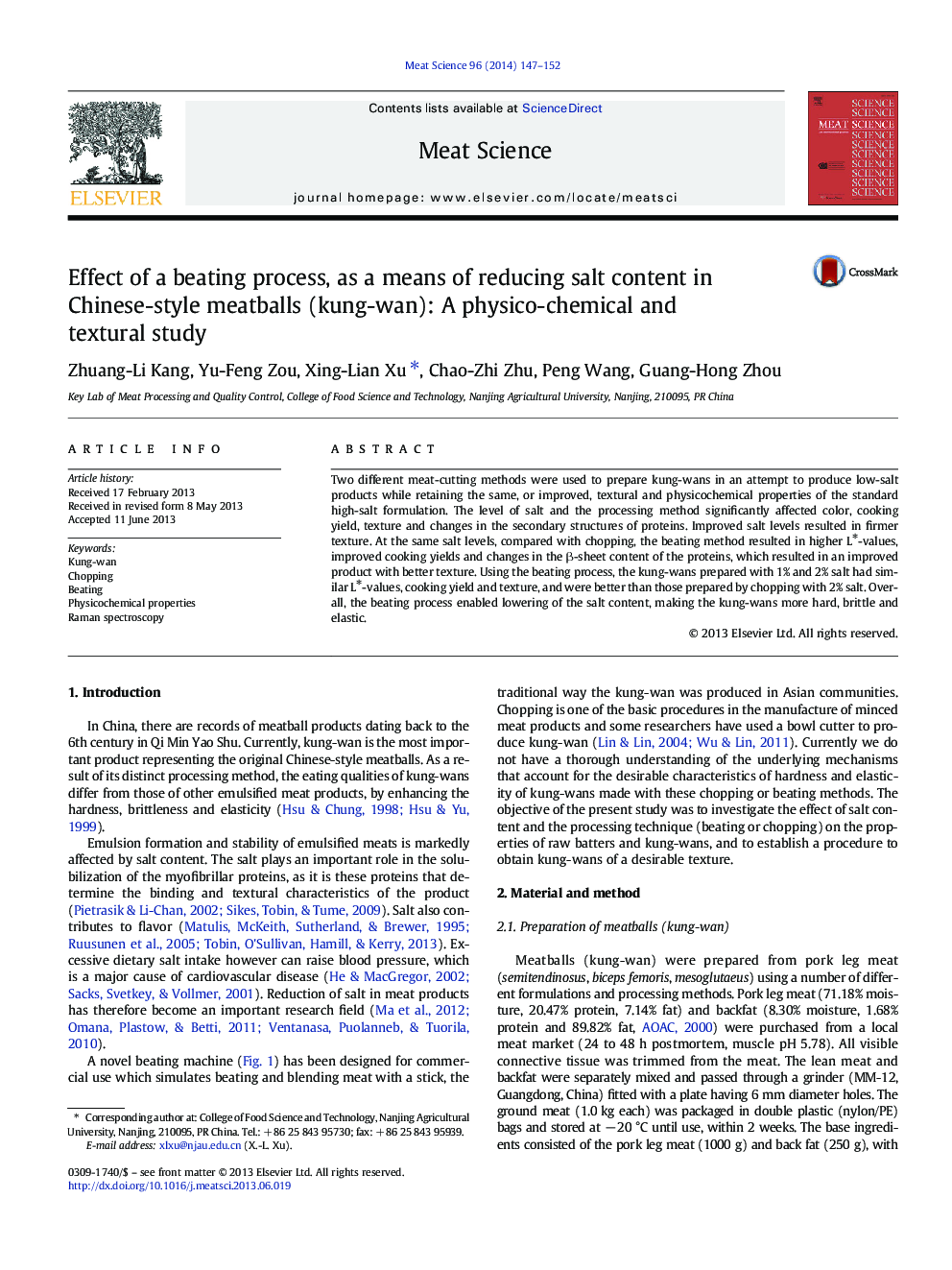| Article ID | Journal | Published Year | Pages | File Type |
|---|---|---|---|---|
| 5791430 | Meat Science | 2014 | 6 Pages |
Abstract
Two different meat-cutting methods were used to prepare kung-wans in an attempt to produce low-salt products while retaining the same, or improved, textural and physicochemical properties of the standard high-salt formulation. The level of salt and the processing method significantly affected color, cooking yield, texture and changes in the secondary structures of proteins. Improved salt levels resulted in firmer texture. At the same salt levels, compared with chopping, the beating method resulted in higher Lâ-values, improved cooking yields and changes in the β-sheet content of the proteins, which resulted in an improved product with better texture. Using the beating process, the kung-wans prepared with 1% and 2% salt had similar Lâ-values, cooking yield and texture, and were better than those prepared by chopping with 2% salt. Overall, the beating process enabled lowering of the salt content, making the kung-wans more hard, brittle and elastic.
Related Topics
Life Sciences
Agricultural and Biological Sciences
Food Science
Authors
Zhuang-Li Kang, Yu-Feng Zou, Xing-Lian Xu, Chao-Zhi Zhu, Peng Wang, Guang-Hong Zhou,
